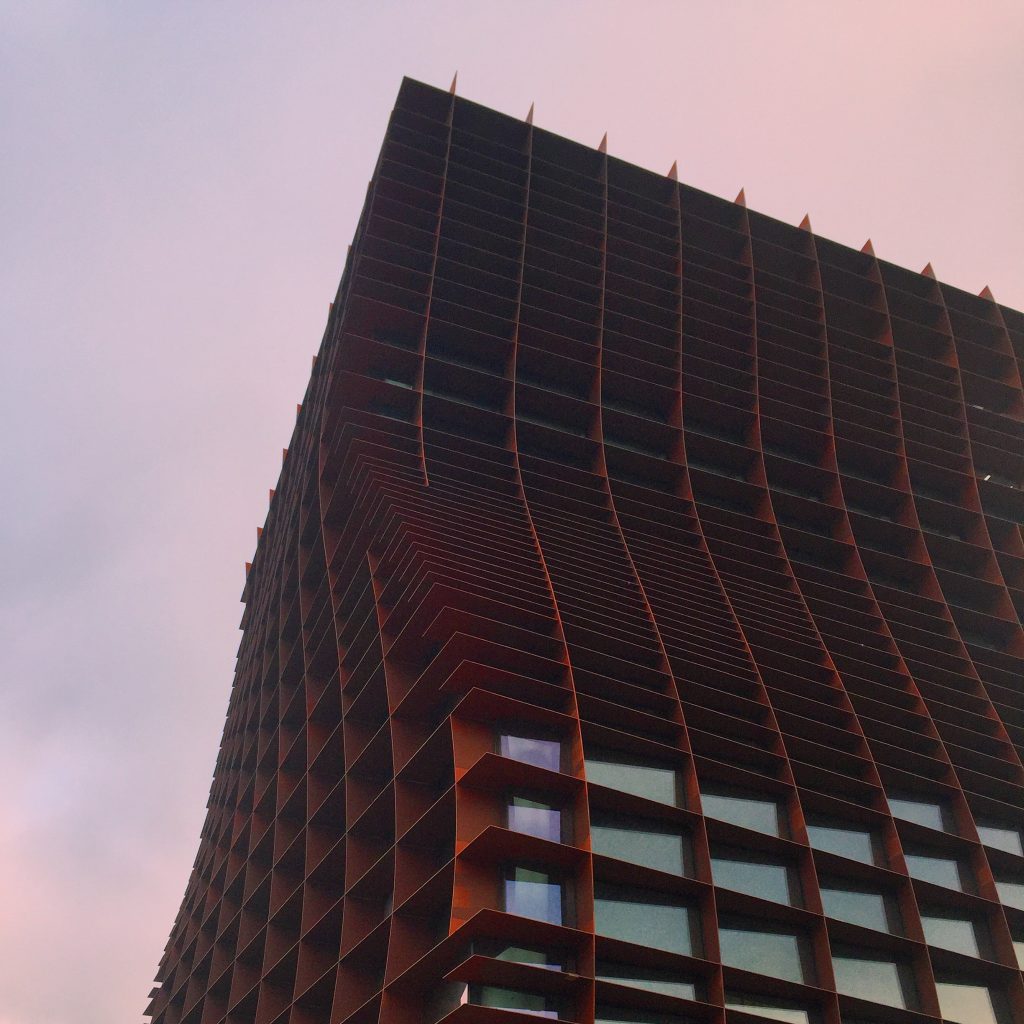Transforming everyday structures into unique workspaces
Atop the fourth level of an otherwise-ordinary parking structure in Culver City, California, lies an improbable squish of glass-and-steel boxes that form a roof-level office called Pterodactyl. Perched like a prehistoric winged predator on the edge of the garage, Pterodactyl—which received a 2016 AIA Award for Architecture—capitalizes on the parking deck’s over-structuring to add leasable volume in a decidedly non-standard configuration.
The setting for Pterodactyl is the Hayden Tract, a part of Culver City that was once a hotbed of manufacturing and light industrial facilities with spur tracks that allowed for easy distribution via the Pacific Electric Railway. These days, the Hayden Tract is a booming tech and media hub, with a creative workforce arriving on the recently completed Expo Line, which occupies right-of-ways from its predecessor, the Pacific Electric Railway. The parking structure Pterodactyl rests upon is a nod to Southern California’s car culture; built in 1998, the decks have an 800-vehicle capacity. The garage now acts as a podium for the offices above it, with its column grid also supporting a set of nine boxes that intersect and overlap to form a two-level office spilling over the garage roof to hang off its western façade.
Part of what has made Eric Owen Moss Architects (EOMA) so successful is his long-term client relationships with people like Laurie and Frederick Samitaur-Smith, whose patronage for three decades has transformed the Hayden Tract in Culver City into a creative wonderland that intersperses more than 30 full-scale architectural experimentswith repurposed warehouses. Pterodactyl completes a complex that includes other unconventional works by EOMA titled Stealth, Umbrella, Slash, and Backslash.
Moss has called his work in the Hayden Tract “an ongoing exploration,” and it’s that kind of study that has pushed both Moss’s practice and his pedagogy; Moss integrated material and technological pursuits into curricula during his tenure as director of the Southern California Institute of Architecture. “[We’re] setting ourselves up with problems we have to solve,” Moss says. “And we’re making things where the pro forma is not yet available.”
Read the full story at Topic Architecture.
